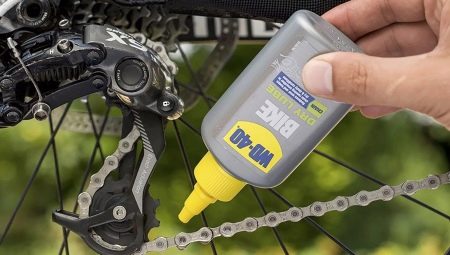A bicycle, like any other means of transportation, needs some care. This allows you to improve its performance, as well as significantly increase the useful life.
Lubricating parts is an essential and essential part of this care. And for each of them requires a certain tool and compliance with the rules for its use.
In this article we will talk in detail about the main varieties of lubricants and their representatives. And also share some recommendations on how to correctly and when to perform this procedure.
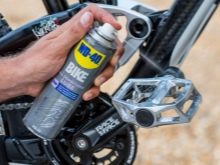
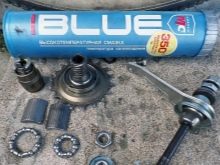

Species overview
There are two main functions that lubricants for bicycles perform:
- protect parts from moisture, preventing corrosion;
- reduce the level of friction of moving components.
Failure to comply with timely care leads to the appearance of rust and the destruction of individual elements. However, they will often jam, making movement difficult. The grease protection layer significantly reduces the risk of these problems.
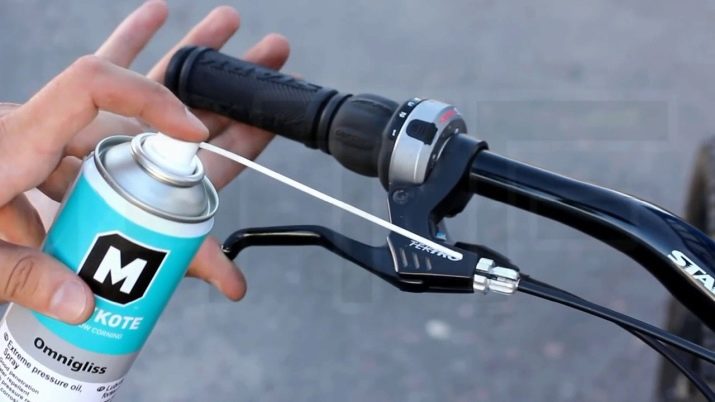
Today, there are three varieties of bicycle grease. Let us consider in more detail each of the groups.
Thick
They are also called consistent. They have a long service life and good tolerance to weather conditions such as frost or heat.
They include substances of dense consistency, which are supplied in banks or tubes. Bicycle greases from this group are:
- calcium;
- lithium;
- graphite;
- petroleum jelly.
Experienced cyclists use them to process slowly moving elements, including bearings and arm bushings. It is also best to cover the chain with thick grease if you decide to “preserve” the bike for long-term storage.
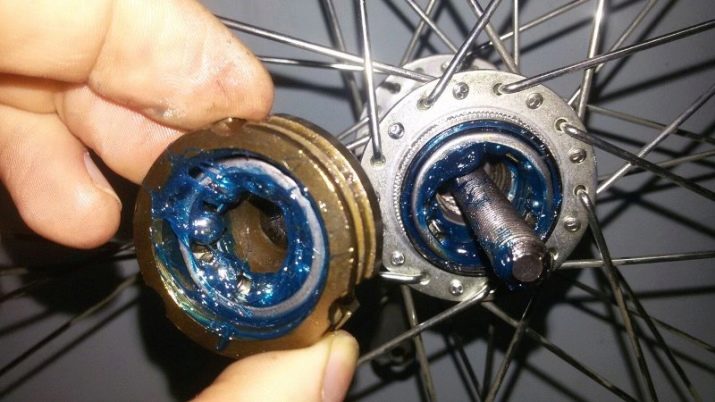
Calcium Remedies when applied, they retain their properties for a long time and adhere tightly to details even during precipitation. They perfectly protect the bike from corrosion and allow it to withstand temperature extremes from -30 to +50? C.
Lithium grease have almost the same properties as calcium, but their temperature range is much wider, from -50 to +150? C. However, they have one drawback - a negative effect on aluminum due to the occurrence of a chemical reaction.
Among graphite substances prevails graphite powder. It is sold in the form of oil, but after application and drying it turns into powder. Such lubrication significantly facilitates the movement of parts.
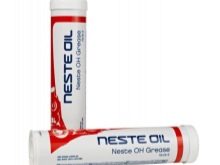


But the grease group has two serious drawbacks:
- they are difficult to apply and get rid of excess;
- dust and dirt adhere to the elements lubricated by them, which also does not benefit the bicycle.
Liquid
Known for the convenience of applying to various parts in the most inaccessible places. But for the same reason run off quickly from the greased elements.
Liquid substances include simple machine oils sold in small oilers or cans. Due to their consistency, they easily penetrate into inaccessible places, and excesses are easily removed. However, oils are quickly washed out with water. therefore Do not use liquid lubricants to cover exposed elements.
It is better to use them for processing brake levers and levers, speed switches and bearings. But do not apply too much oil. Otherwise, dust will adhere to the parts, which impedes their movement.
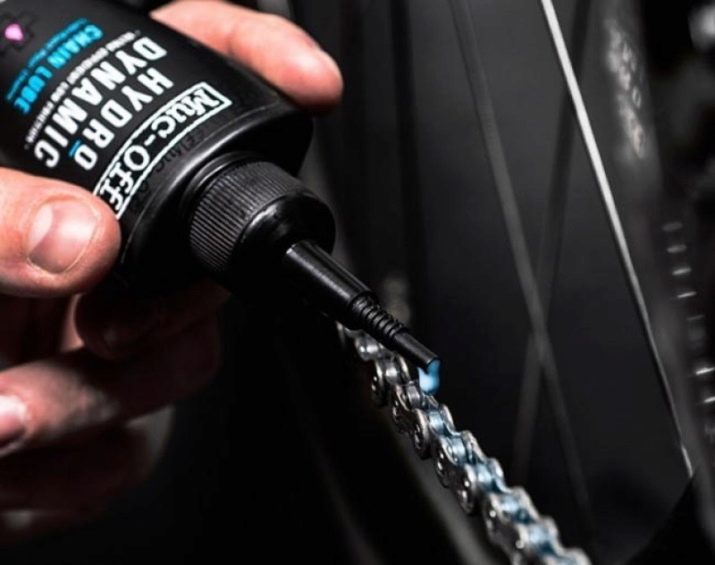
Two-component
Incorporated the qualities of the two above varieties. They are made on the basis of thick greases with the addition of a thinning agent.
Lubricants are excellent for applying to bicycle prefabricated parts. This group includes three types of substances:
- silicone;
- Teflon
- wax.
Most of these lubricants come in the form of a spray, aerosol, or in a bottle for liquids.
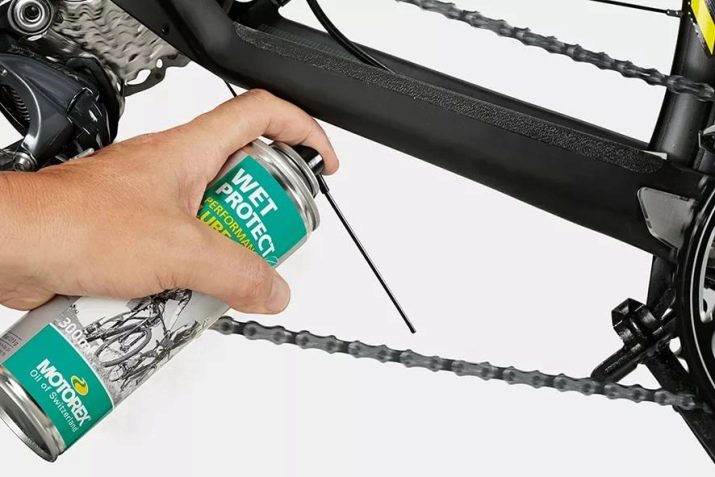
Silicone greases can be found immediately in three consistencies, including thick and liquid. Therefore, they can be used both for open parts and for hard-to-reach ones. At the same time, such a lubricant does not attract dust and does not destroy rubber.
Teflon Tools retain their properties for a very long time and hold fast to the surface of elements. They cope well with the repulsion of dust, dirt and moisture.
Less persistent wax greases but they provide reliable corrosion protection.
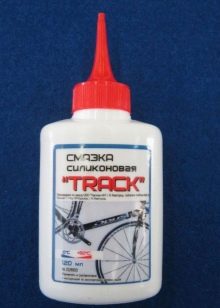
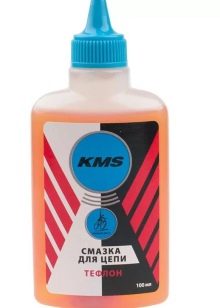
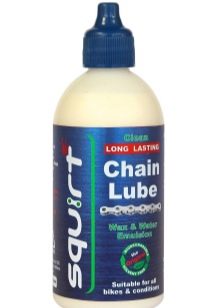
As you can see, two-component substances have all the properties of thick lubricants, but at the same time they are practically devoid of their shortcomings. For this reason today, greases are becoming less and less popular.
How to lubricate different parts?
As you already understood, it will not work to lubricate all the mechanisms of the bicycle with one means, otherwise you can harm them. One will have to spend money on several different lubricants, but such is the fee for long-term operation.
Chain is the first element to remember about lubrication. Without this, it will soon begin to sag, and the sprockets and cassettes on the rear wheel will begin to become damaged. Two types of substances are suitable for a chain depending on the weather:
- for dry - apply liquid lubricant that repels dust every 100 km;
- for raw - Dense grease, which is not washed off by precipitation, renew after 150 km of run.
The best lubricant for chains are wax and silicone formulations. To facilitate the task, you can purchase a special device called a chain hook. First of all, a substance for washing the chain, for example, kerosene, is poured into it. After the chain passes through the device for the first time, the substance inside is replaced by lubricant, and the chain is driven the same way a second time.
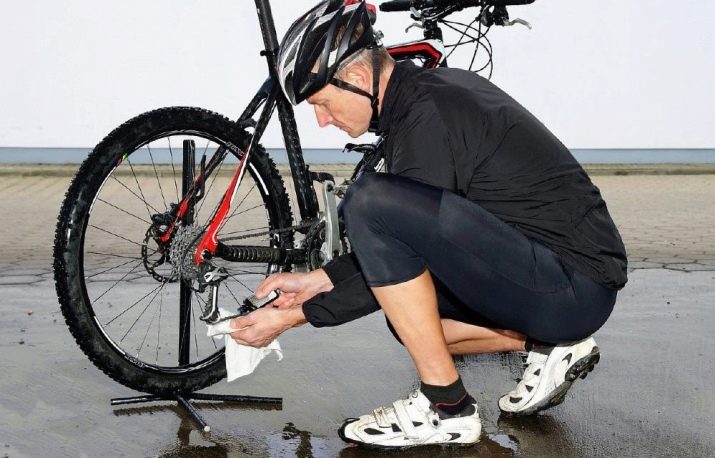
Bearings - Lubricate approximately once a year. This is the life of a lithium grease that is ideal for this part.First, bearings must also be cleaned with kerosene. However, the grease is not applied to them, but to the cups, where the bearings are then inserted.
Wheel hubs - if they have open bearings, the process is as simple as possible: clean the parts from dirt and cover with a new compound. But there are models with bearings located inside the cartridges. Experts recommend simply replacing them with new ones after a certain period of time.
Fork - Silicone grease is best for her legs.. To carry out this procedure, the wheels must be removed.
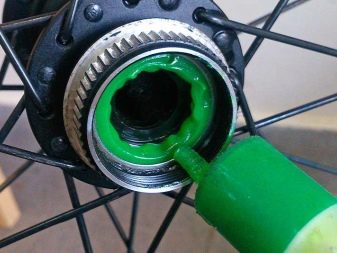
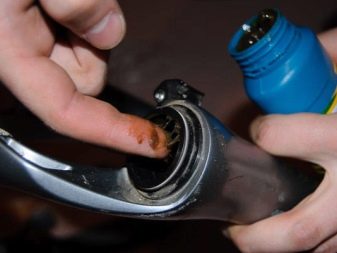
Carriage - in certain cases, needs lubrication so that the bike does not creak. The fact is that with modern bike models, bearings are located inside the cartridge, where they are protected from moisture and dust. In fact, the cartridge is not intended for disassembly. However, with a long off-road driving, that same unpleasant creak appears. In order not to have to replace the carriage with a new one, it can be opened, cleaned and lubricated.
The brake cable is just two drops of oil for it, one for the inlet, one for the outlet. Then you just need to switch the speed, and scroll the pedals. Use a fluid or spray to lubricate the brakes.
Steering column - the situation with it is the same as with the carriage. Modern bikes are equipped with bearings located in the cartridge. Such steering columns are called integrated.
For long trips or off-road driving, occasionally need to open the cartridges and lubricate the bearings.
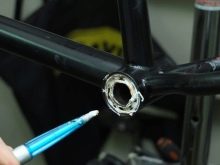

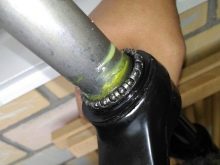
How often to carry out the procedure?
The answer to this question is quite simple - you need to perform lubrication every season. This is especially important after the winter, if you sent the bike for storage. It takes no more than a couple of hours to put the bicycle in order after hibernation.
Some cyclists give their bikes to mechanics, but it’s better to learn how to carry out this procedure yourself, so as not to get in the wrong moment. But if you neglect lubrication at all, then be prepared that one day the parts will begin to fail one after another.
Seasonal lubrication includes the processing of all parts except the chain and fork. Chain lubrication is usually at the discretion of the owner, who can determine how often to do this. Or you can just wait until the chain begins to creak. But this does not mean that she has reached a critical point. The dry chain can withstand up to 30 km drive.
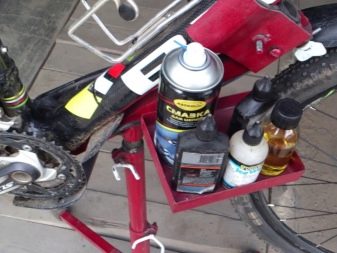

And there is also an opinion that gear cables cannot be lubricated at all, otherwise dirt and dust will stick to them, making movement difficult. However, many professional mechanics still do this, but use substances that repel foreign objects.
In general, it is worth noting that most of the small parts need to be lubricated so that they do not sour. This is characteristic of elements such as seatposts, pedal threads, removal bolts and others. Unscrew soured parts can be very problematic.
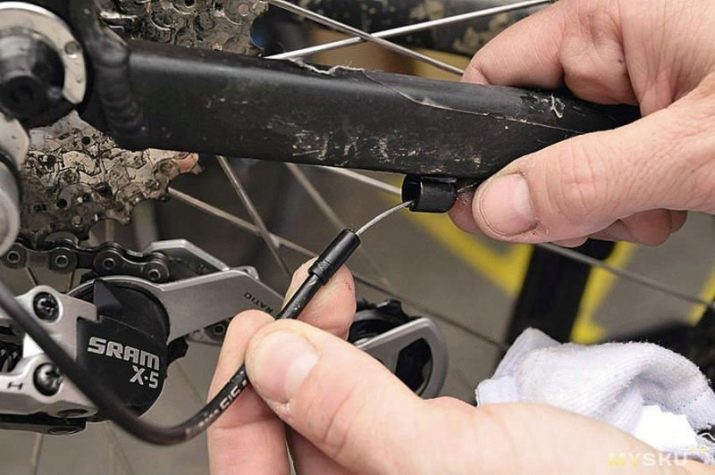
Recommendations
And finally, a few recommendations from experienced cyclists on how to properly lubricate.
First of all, you need to bring your bike in proper form, that is, wash and clean. To do this, you will need simple tools at hand: a bucket, hot water, dishwashing detergent, brush and sponge. It is also worth arming yourself with a toothbrush, which is very well suited for cleaning hard-to-reach spots.
Cleaning can be quick or overhaul. In the first case, it is enough to walk along the frame with a damp cloth and wash the chain without even removing it. In the second case, the chain will still have to be removed and placed temporarily in a container with a cleaning agent. While she is there, you need to remove the rear wheel, rinse the cassette, disassemble the foot of the rear derailleur, and also pay attention to all other important details.
You can start the lubrication itself with any component.Just remember that some fragments like stars or cassettes are recommended to be lubricated several times in a row.
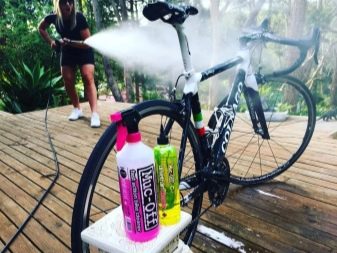
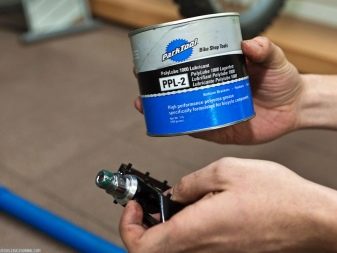
When choosing lubricants, focus on the current season, the presence of precipitation and air temperature. As already mentioned, liquid products are easily washed off by rain, and some of them are not adapted to severe cold or, conversely, heat. And also choose the lubricant based on the frequency of use of the bike, whether it be small trips around the city or long trips over rough terrain.
The chain is a very important component of any bike.. Therefore, do not treat it with greases that can harm it. Dense substances will not be able to provide the desired result, as they are unable to penetrate all the holes in the chain. It is not recommended to use automobile oils and oily liquids that easily attract dust to themselves. Otherwise, you will have to re-clean the chain after two or three trips.
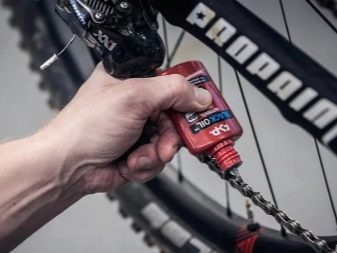

In the end, I must say that Today on the market there are many different means. And their choice often depends on the specific model of your bike and its features. It is better to spend time on a more detailed study of the topic in order to create the perfect set of lubricants specifically for your bike. Then he will serve you for many years.
See how to choose grease for your bike in the video below.
